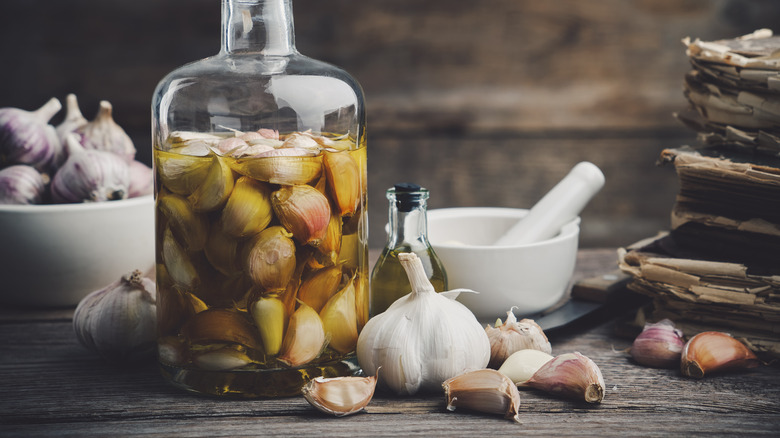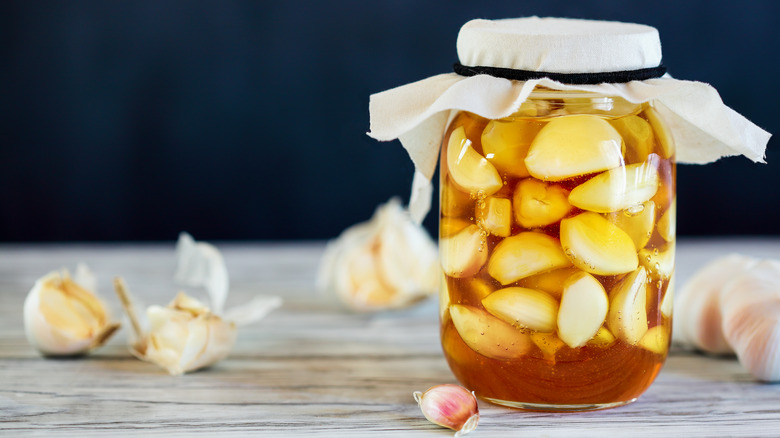The Scientific Reason Your Pickled Garlic Turns Blue
If you've gotten into making your own pickled versions of foods, chances are you've experimented with pickling garlic. You also may have experienced the shock of checking your pickled garlic and discovering it has taken on a strange, bluish hue. Don't panic, this blue color is totally normal for pickled garlic. In fact, the coloring can range from a bright, teal blue to a grassy green color and still be perfectly safe to eat. The reason your garlic takes on this new color is because of enzymes specific to garlic. While there isn't a ton of research to explain why these enzymes react the way they do when broken down, there are some theorized factors.
According to Revolution Fermentation, the long exposure time to the acidity of pickling can begin to chemically react with the sulfur in garlic. As this sulfur is broken down, polypyrroles are created, which lead to this bright blue-green color in the garlic. Even if you don't use a highly acidic brine for your garlic, the process of fermentation may trigger this reaction. Garlic goes through lacto-fermentation, which produces lactic acid. Even this acid has the possibility of reacting with the garlic, producing an unusual color.
Blue pickled garlic is still entirely safe to eat, and won't have any influence on the taste of your product. While the color may be alarming, you can try to think of it as a fun outcome of food science.
How to prevent your pickled garlic from turning blue
There is no foolproof way to ensure your pickled garlic won't change in color, but there are some tips you can remember to try and get the best results. Start your pickling process by selecting fresh garlic to pickle. The older a clove of garlic is, the more you run the risk of seeing it develop coloring. You can also give your garlic a quick blanche, no more than 10 seconds. Blanching is when you speedily cook food in a pot of boiling water and transfer it over to an ice bath to stop any further cooking. Blanching can impact the taste of your final product, so you might want to experiment and see if you even like the final product first.
Be mindful of the products involved in your process. Staying away from certain metals can prevent reactions. Opt to use stainless steel products when you can, and use distilled water for your brine. When selecting salt, stay away from ones that contain iodine. Certain minerals can set off the chemical reaction, so being mindful throughout your whole process is important. When you jar your pickled garlic, store it in a cool, dry place away from sunlight. Changing temperatures can impact the pH levels in your mixture and also trigger the reaction. Again, there's no way to guarantee you won't get some coloring, but these steps can help you avoid it.

